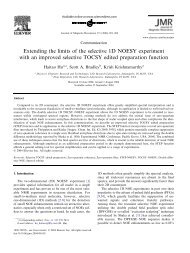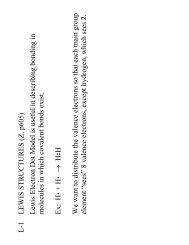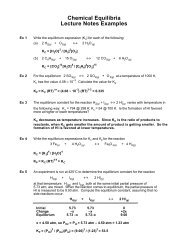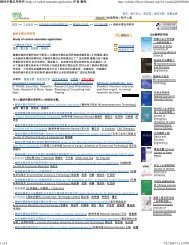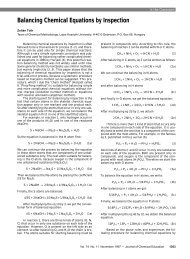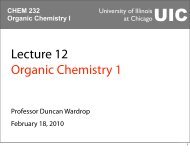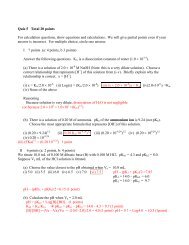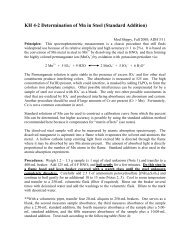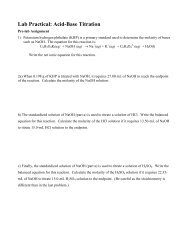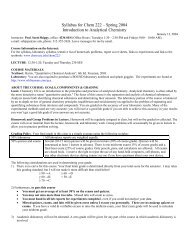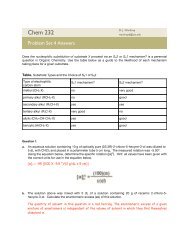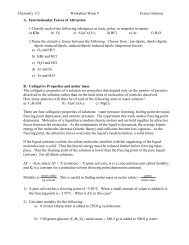Oxidation Number - pdf
Oxidation Number - pdf
Oxidation Number - pdf
You also want an ePaper? Increase the reach of your titles
YUMPU automatically turns print PDFs into web optimized ePapers that Google loves.
OXIDATION NUMBERS<strong>Oxidation</strong> No.’s are assigned positive values to indicate that an atom haslost e’s and formed + ions, and negative values to indicate that atomshave gained electrons and formed – ions.1. The oxidation no. of a free, uncombined element = 0.2. The charge on a simple (monatomic) ion is the oxidation no. of theelement in that ion. In a polyatomic ion, the sum of the oxidation no’sof the consitutent elements is equal to the charge of the ion.3. In compounds (ionic or covalent) the sum of the oxidation no.’s of allelements = 0.4. Ox. No. F = –1Cl, Br, I = –1 (but can be + with O and other X)5. H = +1 (except –1 in metal hydrides)6. O = –2 (except with F and –O–O–). See Z p 120
Notation: <strong>Oxidation</strong> state of element is denoted by a Roman numeral:Cu + (I) Fe 2+ (II)Cu 2+ (II) Fe 3+ (III)Ex: a. Osmium (VI) FluorideOs 6+ + 6Fe - x(+6) + y(–1) = 0 (charge neutrality)OsF6b. Vanadium (V) OxideV 5+ + O -2 x(+5) + y(–2) = 0 (charge neutrality)2V 5+ + 5O 2-V2O5c. Copper (I) SulfideCu 1+ + S 2- x(+1) + y(–2) = 0 (charge neutrality)2Cu + + S 2-Cu2S
Group No of e – Most Common <strong>Oxidation</strong> No.’ sIonic Comp. Covalent Comp.I 1 1 +1II 2 2 +2 +2III 13 3 +3,+1 +3IV 14 4 (rare) –4, –3,–2,–1,+1,+2,+3,+4V 15 5 –3 –3,–1,+1,+3,+5VI 16 6 –2 –2,+2,+4,+6VII 17 7 –1 –1,+1,+3,+5,+7



